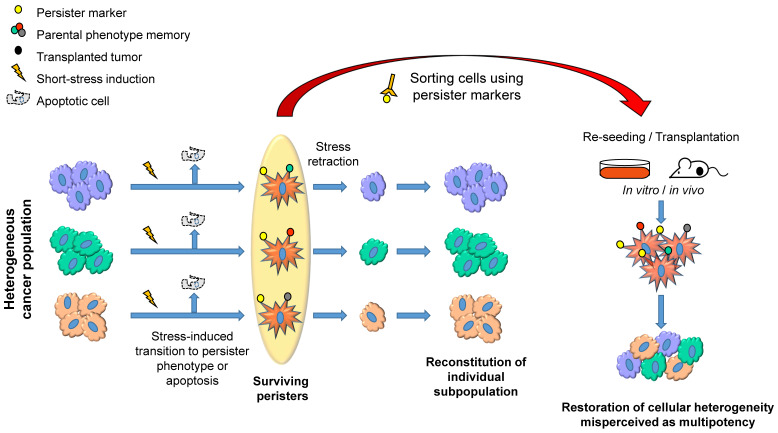Figure 1.
A schematic representation describing how distinct subpopulations of cancer cells transiently shift into a persister state (star-shaped red cells) under stress and maintain tumor heterogeneity. The short-term stress exposure causes a shift of multiple subpopulations into persister phenotype both in vitro and in vivo. The efficiency of transition could vary depending on the stress-inducing conditions and sensitivity of subpopulations to the stress. When the factor inducing stress is removed, the surviving persisters would reverse back to their original phenotypes and proliferate to reconstitute their subpopulations (left). When persister populations are sorted using persister markers and reseeded in vitro or implanted in vivo, each of the populations reverse back to the original phenotype, resulting in the restoration of phenotypic heterogeneity, which could be misperceived as pluripotency or multipotency of cancer cells, because it looks as if the persister cells differentiate into multiple phenotypes (right).

